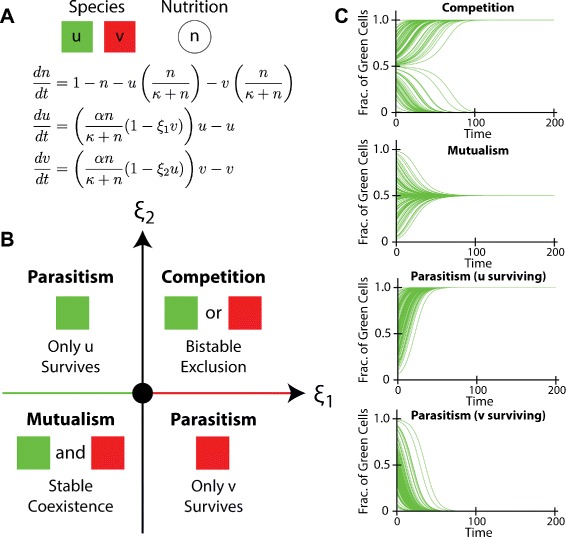Fig. 6.

Analysis of a two-species community in the well-mixed case. a An ordinary differential equation model describing the growth dynamics of two species, including nutrient consumption and interspecies interactions, and a shared nutrition source. b Phase diagram for the steady states of the model. Qualitatively distinct outcomes may arise from communities with different interactions. Competition results in bistable exclusion, mutualism leads to stable co-existence, and parasitism leads to the survival of the species with growth advantage. The origin, green colored axis and red colored axis correspond to the cases of control (neutralism), commensalism, and amensalism respectively. c Simulations of the population dynamics for the communities that are competing, mutualistic, and parasitic
